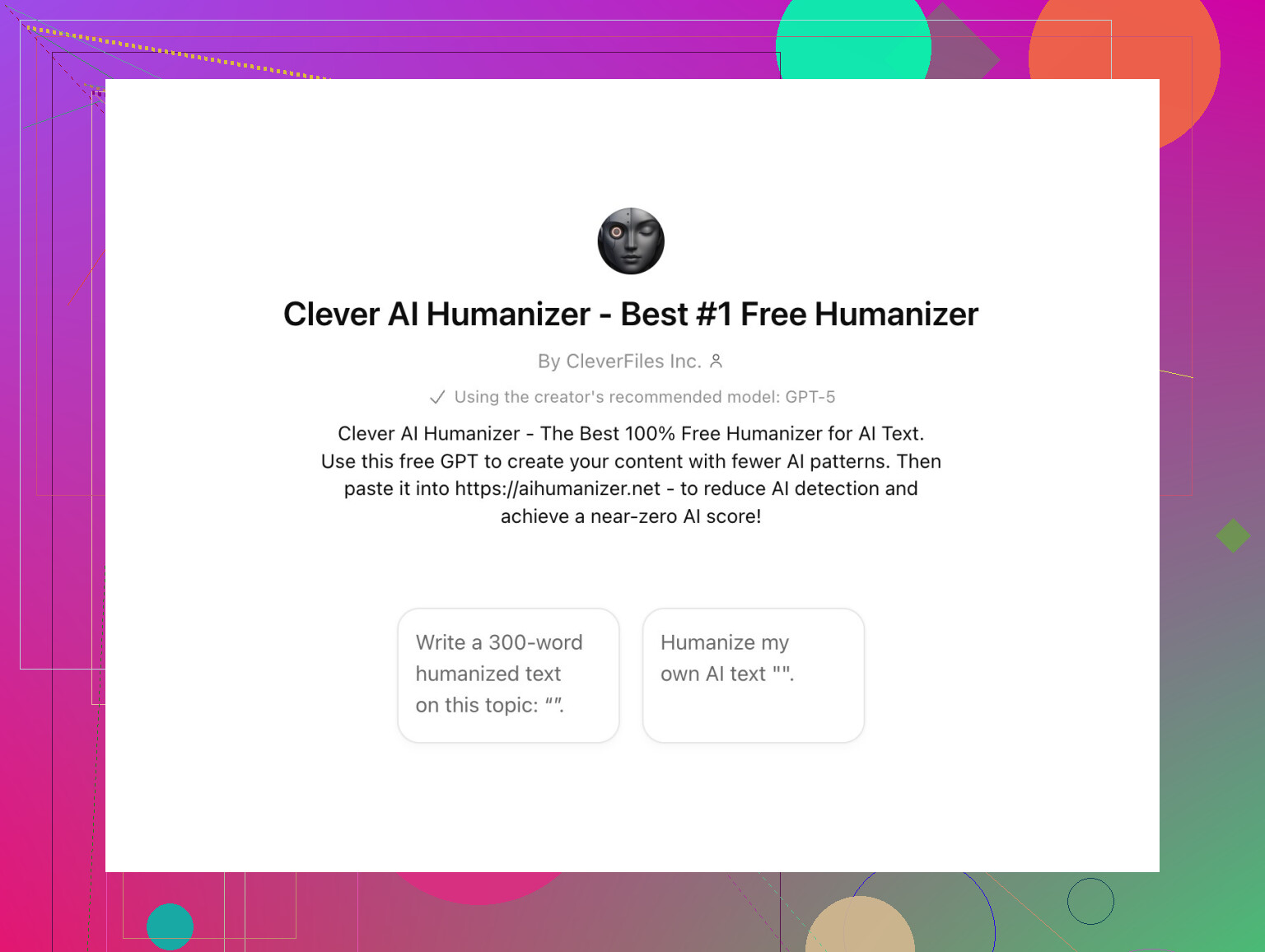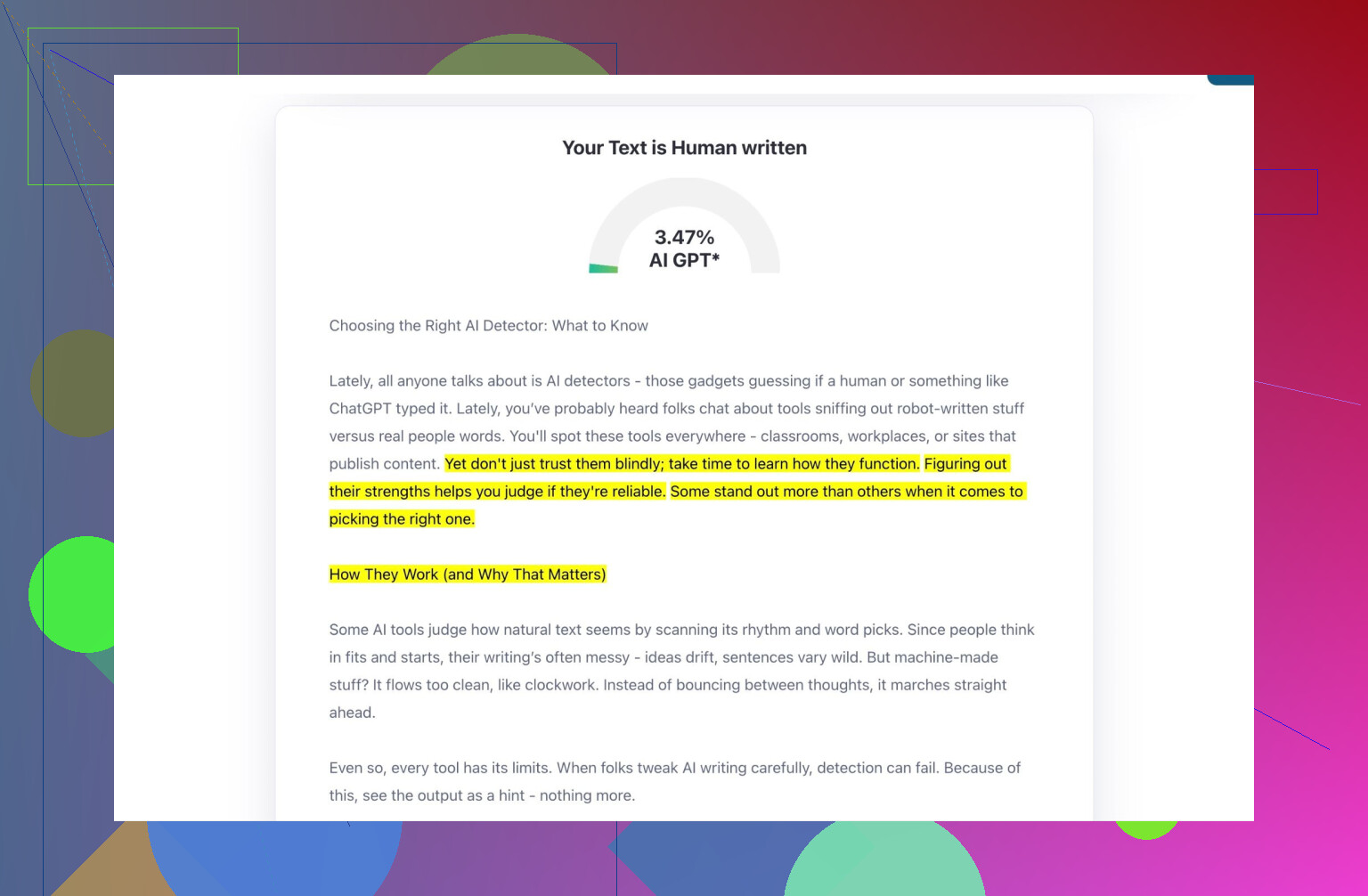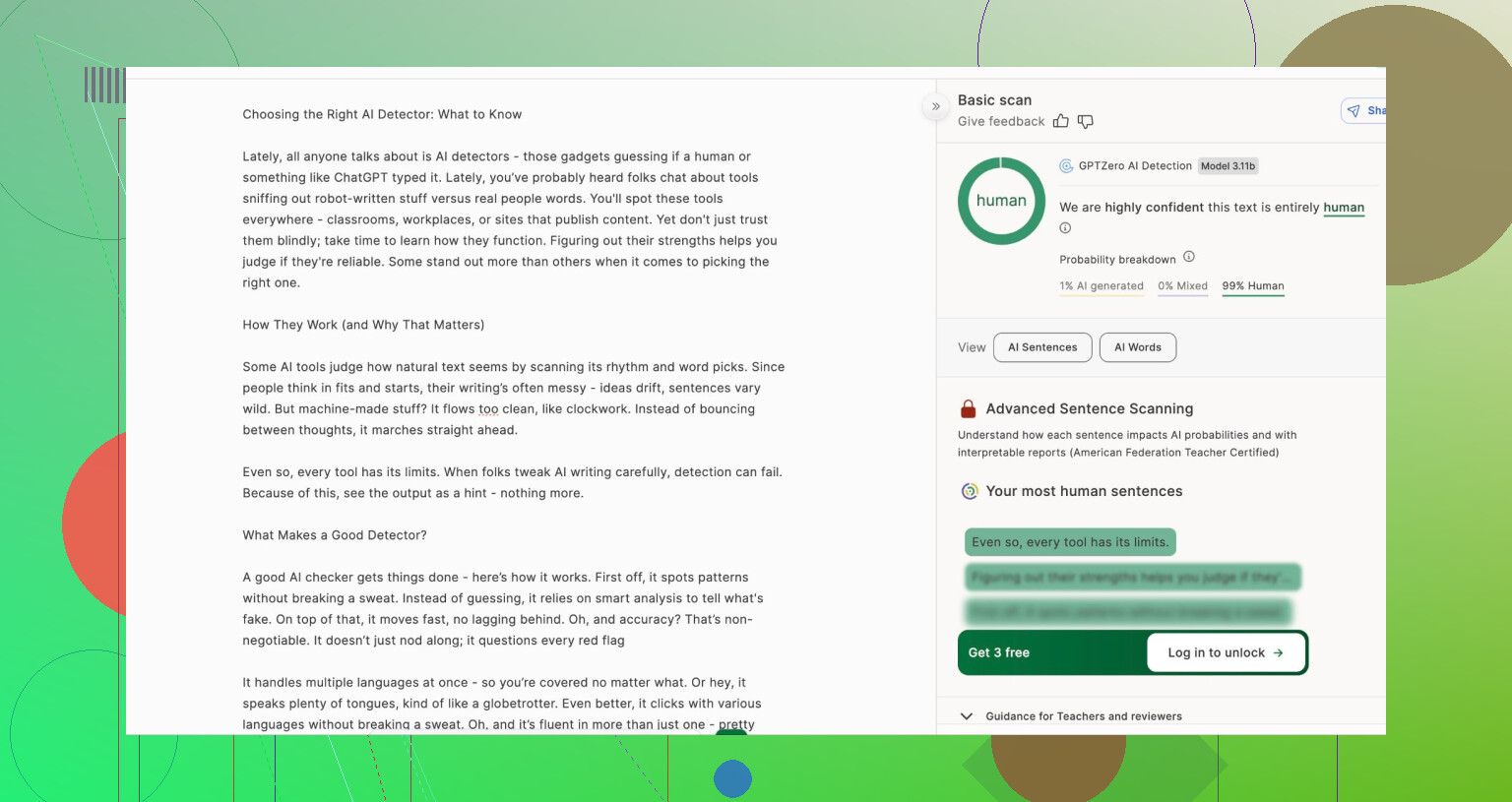I’m working on a project using ChatGPT, but the text it produces sounds robotic and not very natural. I’m looking for tips, tools, or plugins that can help humanize AI-generated content so it reads more like it was written by a real person. Any advice or recommendations would be really helpful.
Getting Around AI Detection: A Community Hack
Hey folks, just wanted to drop something I pieced together after lurking in a few Reddit threads lately. There’s been this recurring recommendation to run your texts through Clever Ai Humanizer—but here’s the kicker, you want to start by generating your drafts in a custom GPT on the ChatGPT site. Apparently, this makes your output way more ‘human’ right from the get-go, and according to several users, it bumps up your anti-detection scores by around 20 to 30%. Wild.
Check it out for yourself—there’s even a walkthrough vid floating on Instagram:
How the Process Goes (Tested and Rambled)
First, hit up the GPT Humanizer on ChatGPT to draft your content. The crucial thing here is that this initial step kind of ‘smooths out’ those obvious AI flags—the sort of robotic phrasing detectors are sniffing for.
Second step? Take THAT output and plug it into https://aihumanizer.net/ for the real polish. It’s like running your essay through your snarkiest friend—comes out a lot less ‘AI-ish’ by the end.
Real Talk: Detector Scores
Alright, time for some receipts. People are really pushing this combo because it works against the top two AI cops:
1. ZeroGPT
Said to be the most widely used. Check out how the texts look after the dual-humanization treatment:
2. GPTZero
If you’re gunning for second-best, here’s what it throws back after you run the process:
My Experience (For What It’s Worth)
I tried this out on a few test paragraphs and honestly, ZeroGPT and GPTZero both spat out ‘0% AI’ like I’d just handed in a handwritten essay. No weird roadblocks, no CAPTCHA loops, just smooth sailing.
Anyway, if you’re tired of AI detectors flagging your stuff all the time, this tag-team method is probably the most no-nonsense fix out there at the moment. Not perfect, but dang close.
Curious to see who else is trying this and how long it lasts before the detectors catch on…
Honestly, all these fancy hacks and anti-detector combos are cool and all (@mikeappsreviewer dropping that double whammy method), but sometimes, the basics kinda get lost in the sauce. Here’s my ‘wish someone told me sooner’ rundown for making AI text actually sound like a real human wrote it, not some weirdly smooth cyborg:
-
Mess it up a little. No seriously, nobody talks in perfect paragraphs or uses pristine grammar 24/7. Throw in a mild typo, a random dash—heck, use an ellipsis mid-thought… Just make sure it’s not unreadable, you know?
-
Short sentences. Long ones make you sound like an over-caffeinated philosopher. Break them up. Use one-liners. Then maybe drop a longer, rambling sentence for variety. Just like this.
-
Sprinkle in opinion, not just facts. Especially if you’re writing something with personality. “I dunno, but I kinda feel like winter is overrated” reads way different than “Winter is commonly considered overrated.”
-
Add colloquialisms, but not too many. “Hey,” “seriously,” “honestly,” “kinda,” and comics-style interjections—these are what regular people use, and AI models are only now catching up.
-
Use lists, as if you’re rattling off stuff to a friend. Bullet points, random asides—they break up monotony and help dodge that uncanny valley.
-
My hot take? Post-processors like Clever AI Humanizer help, especially if you use them as a final ‘mess-it-up’ filter. They’re more of an “add spice after cooking” move, not the main ingredient.
-
Read your stuff out loud, or better yet—run it through text-to-speech. If you cringe, so will everyone else.
Not knocking @mikeappsreviewer’s two-step process at all, but if your end-goal is actually readable and relatable content, a little manual back-and-forth after the AI does its thing goes a long way. Or, y’know, just accept that sometimes, AI is a little weird, and embrace those oddball quirks. Isn’t that peak human anyway?
Honestly, the whole “AI text sounds too robotic” thing is such a pain, but there’s a lot more to fixing it than just running your outputs through endless online filters or chasing every trendy plugin. I saw what @mikeappsreviewer and @andarilhonoturno posted about that double-whammy GPT humanizer method and their “mess-it-up” advice—solid stuff, but sometimes those hacks are more about fooling detectors than actually sounding, well, human.
Let’s get a little real: most AI text falls flat because it’s too safe. It wants to please everyone, so it says nothing new or personal. Here’s what actually works for me (and yeah, takes a lil’ effort):
First, figure out who you’re writing for. AI-generated text doesn’t really get context or audience nuance. Before you even rewrite, ask, “How would I talk to this person? What tone would I use?” Sometimes dropping the formality makes all the difference.
Second—and I know it’s a bit manual, but bear with me—rewrite a few sentences here and there in your actual voice. It doesn’t have to be the whole article. Just sprinkle in some personal opinions or inside jokes, especially early on. Readers subconsciously latch onto authenticity in the intro and then forgive the middle being more generic (pro tip: everyone skim-reads anyway).
Also, current AI tends to over-explain. If you notice a paragraph that neatly wraps up every point like a conclusion in grade school, hack it in half. Humans leave loose ends and rarely tie things up so perfectly—embrace that!
I’ll admit tools like Clever AI Humanizer give a quick “de-detectify” boost, but if your ONLY goal is to pass as human, you sacrifice flavor for plausible deniability. Don’t lean solely on tech; blend it with a few of your own takes, even if that means a typo or weird phrasing now and then.
TL;DR: Don’t only run for detector-zeroing or sprinkle in forced slang—mix in your perspective with some IRL context. Machines can’t fake that, yet. And let’s be honest, nobody remembers a perfectly sanitized essay, but weird, slightly flawed, honest writing? That sticks.
Here’s a hot take: everyone’s obsessed with “humanizing” AI text through layered tools like the Clever AI Humanizer—but let’s face it, all those playgrounds (like what the other folks suggested) sometimes just wash out the quirks that make writing feel real. Still, Clever AI Humanizer does a solid job knocking off those telltale robotic edges and making content flow, so if you’re after smoother, more nuanced prose, it’s worth a shot. The upside? You get text that sails under most AI detectors. The downside? Sometimes the personality gets a little too…neutral, and any strong voice can be diluted if you rely solely on the tool. Competing methods floating around here do a similar job—some add randomness or messiness—but in my experience, none are one-click magic for that lively, off-the-cuff human flavor.
Pro move: combine a quick pass with Clever AI Humanizer for cleanliness, then drop in your own weird, context-aware lines, unfinished thoughts, or conversational asides. That’s the secret sauce detectors can’t flag and readers actually remember. Bottom line—use tools to sand down the rough edges, but don’t expect them to manufacture your personal flair. That part’s still on you.


